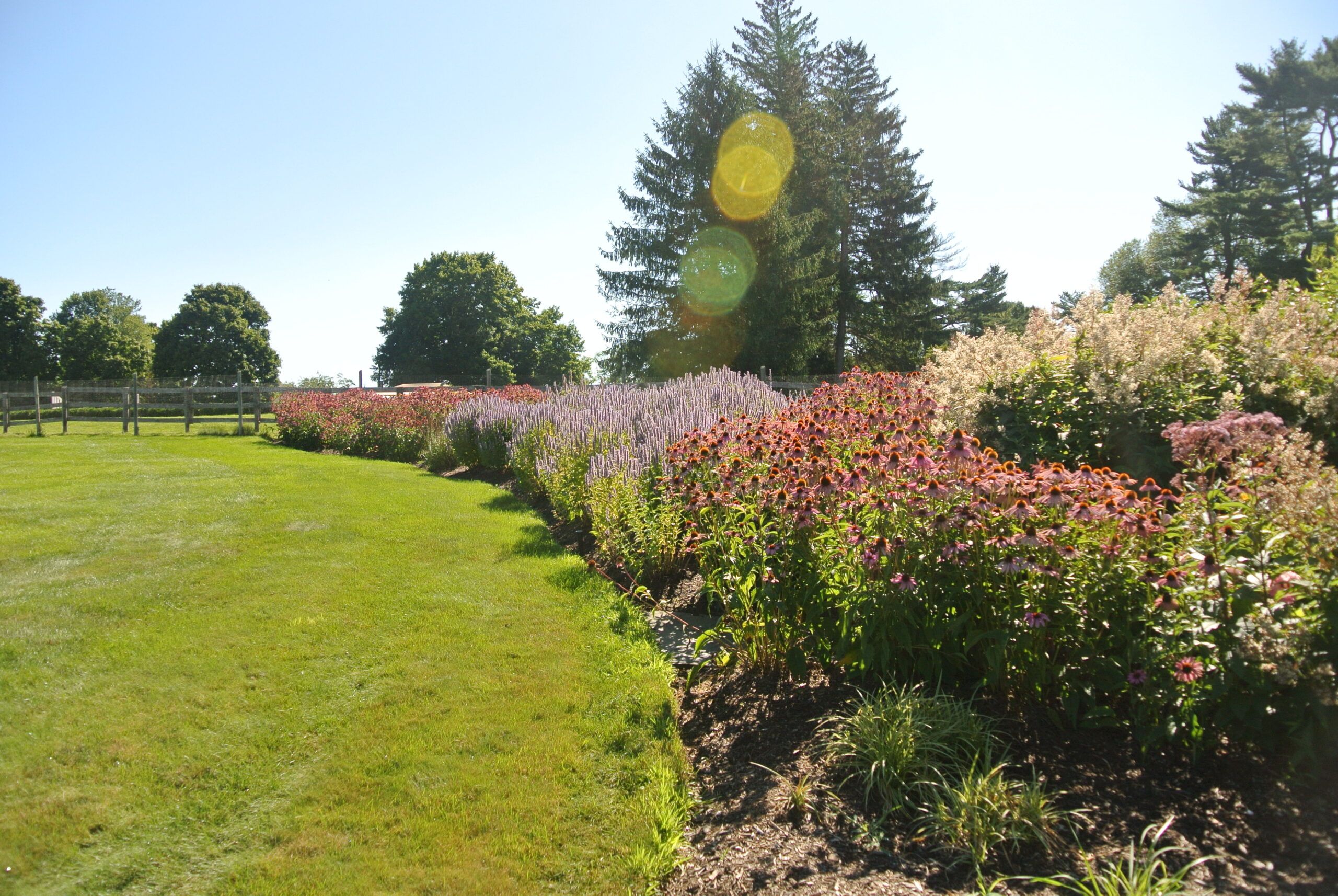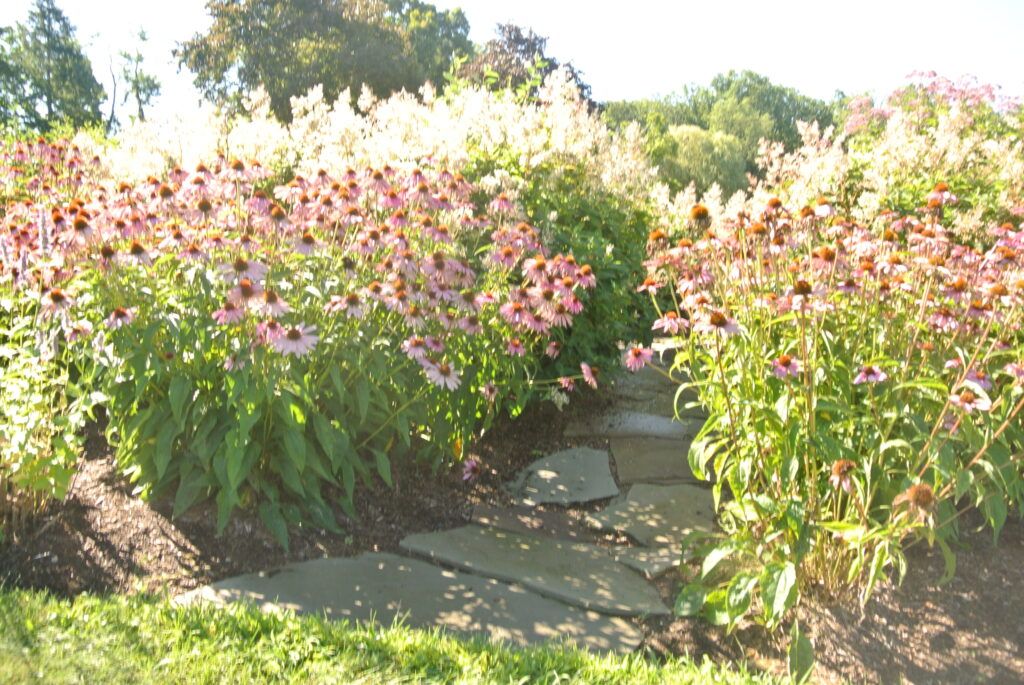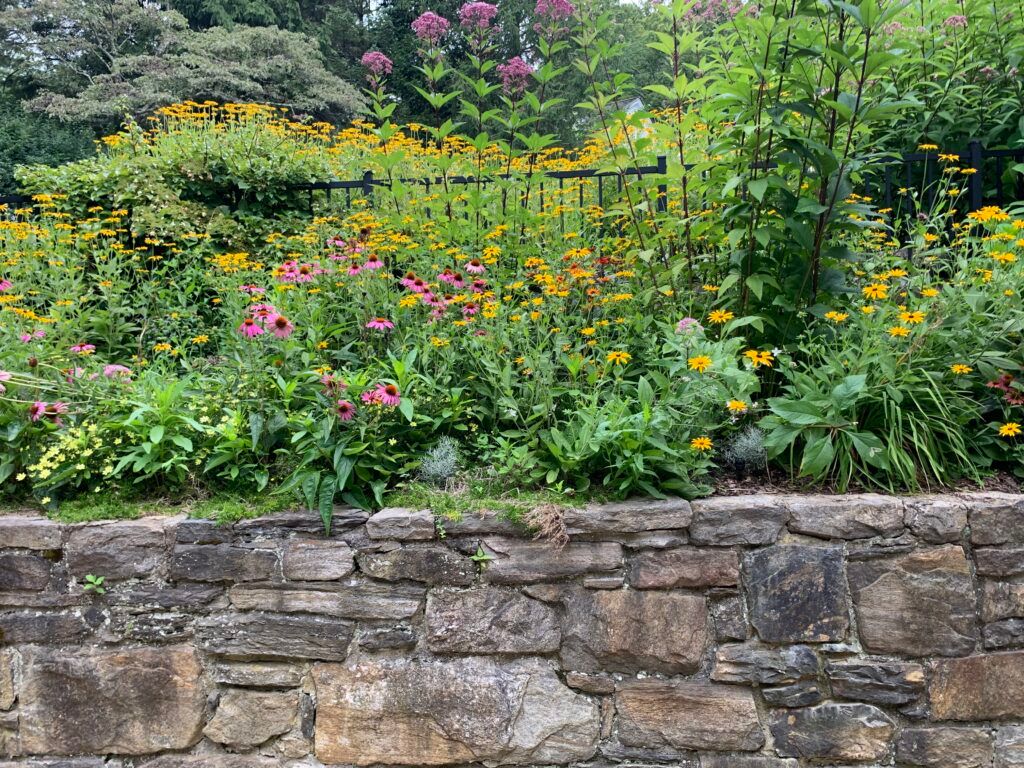How to Create Your Dream Cottage Garden
By Axis Fuksman-Kumpa • June 3, 2022

Do you daydream of opening your back doors into a garden full of bountiful flowers, winding pathways, and secret benches tucked among the bushes? This idyllic vision of a fairytale English cottage garden is more achievable than you might think! It's one of Tilly's favorite garden styles due to its whimsical nature - read more below to find out how we achieve this style in your yard!
What Makes a Cottage Garden?
There’s a romantic appeal to a cottage style garden. This style is inspired by gardens that have been cultivated through the years by a loving caretaker, not a master gardener. Additions are added over a lifetime of living there: an herb garden tucked in by the kitchen, vines creeping up the wooden fence, a rustic cobbled path, and mounds of flowers packed in everywhere they can fit.
Your garden will look a little different than anyone else’s because a true cottage garden is full of exactly what you as its architect adore. You can throw out the rules because cottage gardening is all about embracing organized chaos.
While cottage gardens are unique to their owners, there are some common design themes that tend to unify this loose and informal design style. Key cottage garden design elements include:
- A wide and free-styled plant palette
- Free and organic planting, paths, and more—no carefully planned organization here
- Bright and colorful flowers and accents
- Cozy and intimate spaces that feel tucked away from the world
- An abundance of flowers, fruits, and vegetables filling every available space
- Cheerfully ignoring the “rules” of traditional landscape design

Cottage Gardens vs. English Gardens
While many cottage gardens are inspired by classic and cozy English gardens which feel like a peek into a well-loved storybook, they don’t have to follow all the same rules. Cottage gardens take the delightful hodge podge approach of English gardens and apply them to whatever locale they’re in.
For example, don’t feel like you have to fill your garden with English roses if you live in the middle of the desert. You’ll be fighting a losing battle trying to get those delicate flowers to survive in your climate! Instead, think about the design principles of a cottage garden and use them to build out a plan full of hardy plants that will thrive in your landscape.
Cottage gardening is all about creating a homey feeling, and that includes a reflection of its designer and its location. Cottage gardens exist all over the world, so feel free to fully embrace your landscape and design with your climate in mind. From your softscape to your hardscape, selecting regional favorites will help to make your garden feel natural and genuine.

Plants for a Cottage Garden
While you can make almost any plant work in a cottage garden, there are some that naturally lend themselves to this design style.
We recommend working with plenty of perennials. These plants that return year after year will grow and spread into your cottage planting, effortlessly creating truly organic structure in your garden. They’re also conveniently low-maintenance since you don’t have to replace them every year.
Native plants are an excellent candidate for any garden, but especially for cottage gardens. As mentioned above, cottage gardens often reflect their environment, and native plants do that perfectly. They allow you to embrace your natural landscape and welcome a host of beneficial pollinators and native wildlife into your space. Plus, they are typically easy to care for because they’re perfectly suited to live in your climate.
There are many hardy and versatile plants that capture the cozy and romantic feel of a cottage garden, and we’ve found some firm favorites over our years of landscape design. These are some of our top picks for cottage garden plants:
- Allium: These sun-loving ornamental cousins of the onion are known for their cheerful pom-pom-shaped flowers and their impressive ability to repel deer and most insect pests.
- Lavender: These beautifully aromatic plants are a classic beloved for their soft purple flowers and soothing scent. They thrive in the sun and make a perfect companion plant for both flowers and vegetables.
- Foxglove: Known for their dramatic and colorful stems of bell-shaped flowers, these short-lived perennials make a dramatic addition to your garden. They’re toxic when eaten, meaning they repel pests, but their nectar attracts pollinators and hummingbirds.
- Salvia: Fragrant and colorful, long-flowering salvias attract pollinators and people alike with a rainbow range of purple, pink, red, yellow, white, and blue flowers. You can find annual and perennial varieties that flourish in sun and partial shade.
- Geranium: Hardy perennial geranium varieties thrive in a wide range of temperate climates. They produce delicate and classic-looking blue, purple, pink, and white flowers that will typically provide a second bloom when spent flowers are trimmed back.
- Weigela: These old-fashioned shrubs are making a comeback—and for good reason! Weigela bushes have dense green foliage and produce petite pink flowers in spring and early summer. They make perfect garden features or hedge plants and attract hummingbirds to your yard.

Hardscape for a Cottage Garden
Cottage garden design is characterized by an abundance of plants, but framing them with the right hardscape features will help to complete your cohesive and cozy design. The key to capturing that romantic feeling is making sure that your hardscape elements are naturally nestled among your plants as if they’ve been forgotten in a meadow.
Some of our favorite hardscape cottage garden ideas include:
- Picket fences: Picket fences are traditional, homey, and immediately bring a bit of nostalgia into a design. They’re classically painted white, but you can branch out with natural wood or a subtle pop of color.
- Trellises: There’s nothing as evocative of a fairytale garden as a flower-covered trellis. Climbing roses, clematis, and honeysuckle all look breathtaking climbing up a flat or arched trellis.
- Stone walls: A rustic stone wall adds structure to your garden with natural materials. They have a timeless appeal and help to enclose your garden and create a more intimate space.
- Irregular pavers: A well-trodden pathway winding between the flowers is a magical addition to a cottage garden, but regimented brick or slick concrete immediately ruins the vibe. Opt for irregularly-shaped pavers to create an organic, haphazard effect.
- Unusual garden art: Cottage gardens are all about the personal and unexpected pieces shine when they’re tucked in among your plants. Unique found objects can become trellises, quirky statues elicit a good chuckle when they’re peeking out from under a bush, and folk art is at home in many a cottage garden.
At the end of the day, a cottage garden is largely what you make it. Since the style is all about breaking the rules of traditional garden design, there are no hard-and-fast rules to follow. Instead, much of what we recognize as a cottage garden is characterized by love. Love for region, plants, home, art, and more shows through as the signature of the gardener who created it. Design from the heart, and you can’t go wrong!
Check out some Tilly cottage style gardens below. Interested in learning more about our design process? Read to get started on your own cottage style yard? We can help!









Read more about: Landscape Design Tips